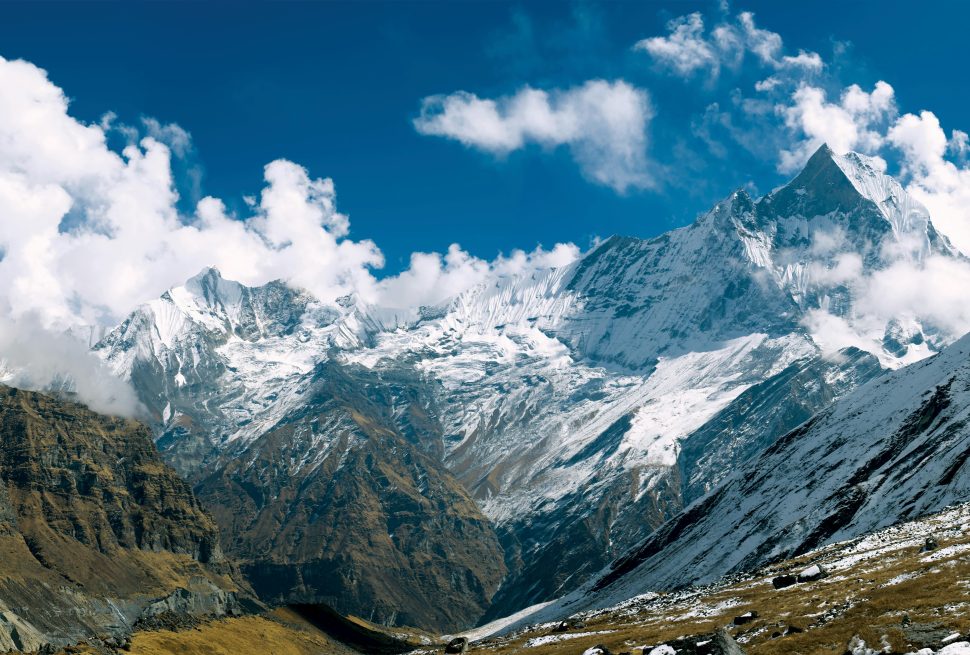Tsum Valley is a stunning hidden gem in Nepal, located in the Gorkha District. Known for its breathtaking landscapes and rich Tibetan culture, it is home to the Tsumba people who practice Tibetan Buddhism. The valley features important monasteries like Rachen Gumba and Mu Gumba, attracting many visitors seeking spiritual experiences. Tsum Valley is also famous for its vibrant festivals, showcasing local traditions and music. With its terraced fields, warm hospitality, and beautiful scenery, Tsum Valley is perfect for travelers looking for an authentic and serene Himalayan adventure. Explore this unique destination and discover its cultural treasures.
In this blog, we’ll explore the many facets of Tsum Valley, including its unique geography, cultural heritage, and the legends that define this enchanting place.
Geographic Overview of Tsum Valley
The Tsum Valley is located in the Gorkha District of Nepal, bordered by Tibet to the north and the majestic Ganesh Himal range to the south. This valley is perched at an altitude ranging from approximately 2,000 meters to over 5,000 meters, offering a dramatic landscape characterized by rugged mountains, lush forests, and cascading rivers.
Landscape and Scenery
The valley is surrounded by snow-capped peaks, creating a stunning backdrop that leaves visitors in awe. The varying altitudes contribute to a diverse ecosystem, where you can find a rich array of flora and fauna. The lush greenery in the lower altitudes gradually gives way to alpine meadows as you ascend higher, revealing breathtaking views of the surrounding mountain ranges.
The Unique Climate
Tsum Valley experiences a unique climate that varies with altitude. The valley has a temperate climate during the summer months (April to June), making it an ideal time for trekking and exploration. The winters (December to February) can be quite cold, especially at higher elevations, with the possibility of snowfall. Spring and autumn are also delightful times to visit, as the weather is generally mild, and the natural beauty is at its peak.
Cultural Significance of Tsum Valley
The Tsum Valley is not just about breathtaking landscapes; it’s also rich in cultural heritage. The valley is home to the Tsumba people, who have their own distinct language, traditions, and customs. Their culture is heavily influenced by Tibetan Buddhism, and the valley is dotted with monasteries and stupas that serve as spiritual centers for the community.
Historical Background
The history of Tsum Valley is intertwined with Tibetan Buddhism. According to local legends, the valley was established as a Buddhist settlement by the famous yogi Milarepa in the 11th century. This makes Tsum Valley a significant pilgrimage site for Tibetan Buddhists, who come to pay their respects and seek spiritual guidance.
Monasteries and Sacred Sites
One of the valley’s highlights is its numerous monasteries, including the famous Rachen Gumba and Mu Gumba. These monasteries are not only architectural marvels but also serve as vital centers for preserving Buddhist teachings and traditions. Visitors can explore these sacred sites, which are often adorned with intricate murals and sculptures that tell the stories of Buddhist legends.
Local Traditions and Festivals
The Tsumba people celebrate various festivals throughout the year, which are deeply rooted in their cultural and religious beliefs. The most notable is the Lhosar festival, marking the Tibetan New Year. During this time, the valley comes alive with colorful festivities, traditional dances, and vibrant ceremonies, providing a unique opportunity for visitors to immerse themselves in the local culture.
Flora and Fauna of Tsum Valley
The diverse ecosystems of Tsum Valley support a wide range of plant and animal species. The lower regions are lush with deciduous forests, while higher altitudes are characterized by coniferous trees and alpine plants.
Unique Flora
The valley is home to many medicinal herbs and plants, some of which are used in traditional Tibetan medicine. Wildflowers bloom in the spring, adding vibrant colors to the landscape.
Wildlife
Wildlife enthusiasts may spot various animals in Tsum Valley, including blue sheep, Himalayan tahr, and even elusive snow leopards in the more remote areas. Birdwatchers can also enjoy observing a variety of bird species that inhabit the valley.
The Spiritual Journey through Tsum Valley
For many travelers, visiting Tsum Valley is not just about sightseeing; it’s a spiritual journey. The valley’s serene environment and spiritual significance provide an ideal backdrop for introspection and meditation.
Trekking Experiences
While this blog focuses more on the cultural and geographical aspects, it’s worth noting that Tsum Valley is a fantastic destination for trekking enthusiasts. The trails lead through picturesque villages, ancient monasteries, and stunning landscapes, offering a chance to connect with nature and the local community.
Meditation and Retreats
Many visitors come to Tsum Valley seeking tranquility and spiritual growth. Several monasteries offer meditation retreats and spiritual teachings, allowing travelers to deepen their understanding of Buddhism and find inner peace amidst the serene surroundings.
Engaging with Local Communities
Interacting with the local community is an enriching experience for travelers. The Tsumba people are known for their hospitality, and spending time with them can provide valuable insights into their way of life, traditions, and beliefs.
Exploring the Villages of Tsum Valley
As you journey through the Tsum Valley, you’ll encounter several picturesque villages, each with its unique charm and character. These villages are not just places to rest; they offer a glimpse into the daily lives and traditions of the Tsumba people.
Chumchet Village
Chumchet is one of the first villages you’ll come across when entering the valley. It is known for its stunning landscapes and vibrant local culture. The villagers are engaged in farming and animal husbandry, providing visitors with an authentic experience of rural life in the Himalayas.
Nile and Chhule Villages
Further along the trail, the villages of Nile and Chhule offer breathtaking views of the surrounding mountains and are famous for their warm hospitality. Here, visitors can engage with local families, learn about their traditional practices, and even participate in daily chores, creating a deeper connection with the culture.
Rachen Gumba Village
Near Rachen Gumba, the village shares its name with the nearby monastery, showcasing traditional architecture and local craftsmanship. Visitors can witness the construction of stone houses and the weaving of colorful rugs, a practice that has been passed down through generations.
Local Cuisine
While exploring these villages, don’t miss the opportunity to savor traditional Tsumba cuisine. Dishes such as thukpa (noodle soup) and momos (dumplings) are common and reflect the flavors of Tibetan culinary traditions. Eating with local families provides insight into their culture and hospitality.
Legends and Myths of Tsum Valley
The Tsum Valley is steeped in legends and myths, many of which center around the figure of Milarepa, one of Tibet’s most revered yogis and poets. His teachings and adventures have left a lasting impact on the region, making it a significant site for pilgrims and spiritual seekers.
The Legend of Milarepa
According to local lore, Milarepa meditated in the caves and valleys surrounding the Tsum Valley. His journey to enlightenment is said to have taken place here, where he faced numerous trials and tribulations. Many of the caves in the area are believed to be places where he found solace and spiritual awakening.
Sacred Sites Associated with Milarepa
Various caves and monasteries in Tsum Valley are dedicated to Milarepa, drawing followers who seek to honor his legacy. The Milarepa Cave, where he is believed to have meditated, is a popular pilgrimage site. Visitors can explore these sacred spaces and reflect on Milarepa’s teachings and experiences.
Spiritual Practices in Tsum Valley
The spirituality of Tsum Valley is deeply intertwined with the daily lives of its inhabitants. Tibetan Buddhism plays a crucial role, influencing the customs, festivals, and practices observed by the Tsumba people.
Monastic Life
Monasteries like Rachen Gumba and Mu Gumba serve as centers for spiritual practice and education. Monks dedicate their lives to studying Buddhist texts, meditation, and performing rituals that maintain the spiritual vibrancy of the valley.
Pilgrimage and Rituals
The valley attracts pilgrims from various regions, particularly during special occasions and festivals. These events often include prayers, offerings, and ceremonies that honor the valley’s spiritual significance. Observing these rituals provides visitors with a deeper understanding of the local culture and beliefs.
Meditation and Retreats
Many visitors to Tsum Valley seek opportunities for meditation and spiritual retreats. The serene environment and the presence of monasteries create an ideal setting for reflection and personal growth. Engaging in these practices allows travelers to connect with their inner selves and the spiritual essence of the valley.
The Accessibility of Tsum Valley
While Tsum Valley is relatively remote compared to other trekking destinations in Nepal, it has become more accessible in recent years. This accessibility has contributed to its growing popularity among travelers seeking off-the-beaten-path experiences.
Trekking Routes
The primary route to Tsum Valley begins from the town of Arughat, which is accessible by road from Kathmandu. The trek to the valley typically takes about 6-10 days, depending on the route and pace. The trail winds through beautiful landscapes, terraced fields, and quaint villages, allowing trekkers to experience the region’s natural beauty and culture.
Local Guides and Porters
To fully appreciate the Tsum Valley experience, hiring a local guide is highly recommended. Local guides possess in-depth knowledge of the area, its culture, and its history. They can enhance your journey by providing valuable insights and facilitating connections with the local community.
Conclusion
Tsum Valley is a hidden gem waiting to be discovered by those who seek adventure, culture, and spiritual enrichment. With its breathtaking landscapes, rich traditions, and deep-rooted spirituality, it offers a unique experience that sets it apart from more popular destinations in Nepal. Whether you’re trekking through its picturesque villages or engaging in spiritual practices at its monasteries, Tsum Valley promises a journey that will leave a lasting impression on your heart and soul.
To conclude, Tsum Valley is a remote place of Nepal, a hidden gem that offers a unique blend of natural beauty, rich culture, and spiritual significance. With its stunning landscapes, vibrant traditions, and the warm hospitality of the Tsumba people, it’s a destination that deserves to be discovered. Whether you seek adventure, spirituality, or simply a break from the ordinary, Tsum Valley has something to offer every traveler. Click here to check our package on Tsum Valley.



